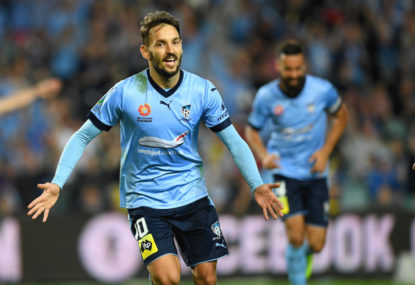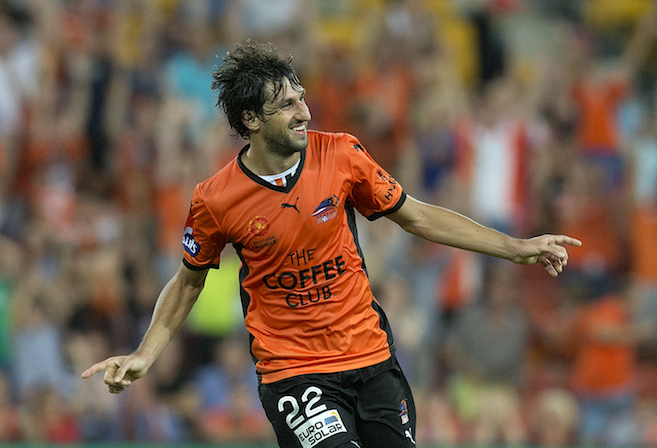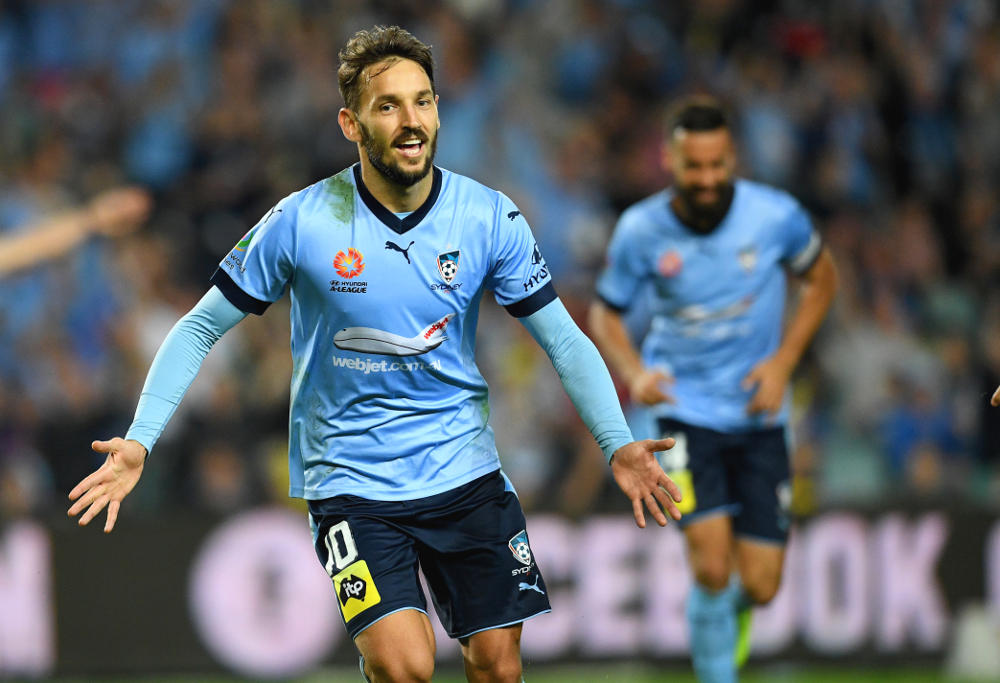The Roar's A-League Men tips and predictions: Round 26 - the jostle for finals positions is on in earnest
Here is the way the Roar expert panel sees all the action unfolding across the final weekend of play prior to the semi-finals.

As Sydney FC reflect, as they surely will over the next few weeks, on their triumphant double-winning campaign, there will be no creeping anxiety about next season.
An Asian Champions League tilt is on the horizon, where they will – eventually, in January 2018 – enter as one of the A-League’s most promising participants in years.
The embryo of a budding dynasty is forming, with hopes high for next season’s A-League charge. And, crucial to all these optimistic projections, Sydney’s best player, Milos Ninkovic, has been re-signed and secured as a marquee.
The Johnny Warren medallist, who was coy about his future in the harbour city when asked a month or so ago, added joy to joy when the news of his re-signing broke early this week, with championship celebrations still echoing raucously throughout the sky blue half of Sydney.
Outgoing club CEO Tony Pignata left a golden gift, and inked the Nink before stepping down. One of either Bobo or Filip Holosko, who were Sydney’s two cap-exempt players this season, has made way, with Ninkovic assuming a wholly deserved higher pay-grade.
So, how common is it for Johnny Warren medallists to stay with their teams? The A-League is maturing its way out of being simply a springboard league for promising young players, or a holiday run-out for the aged and marketable. But, for the league’s best player, in any given season, there must always be a niggling thought in mind, that perhaps there are bigger, greener pastures that would more befit.
Diego Castro won the Johnny Warren Medal last season, and re-signed with the Perth Glory in the months following, his bauble – a symbol of his newly minted value – jangling around his neck.
Thomas Broich, winner in 2012 and 2014, has only this season departed the Brisbane Roar, and is the biggest reason for their sustained competitiveness over the last five years. But only these two Johnny Warren winners, along with Bobby Despotovski – the A-League’s inaugural winner – were with their clubs the season following their individual triumph.
Ninkovic has now joined them in this regard, and it’s a sign of the growing stature of the competition; just one of the first five Johnny Warren medallists were with their clubs the next season, as opposed to four of the subsequent six winners.

(AAP Image/Dave Hunt)
Broich’s value to Brisbane has persisted from his first great season until his final one, a campaign ended mournfully and, according to every value metric, as well as the eye-test, rather too soon for most Roar fans’ liking.
Castro’s sophomore season in the A-League has been one where his attacking instincts, and preciousness to Perth’s volatile system, have not waned. He is by far the most important factor in their high-scoring, semi-final-reaching 2016/17 rollick.
Similarly, there is no reason to expect Ninkovic’s importance to Sydney to recede next season.
His attacking play won him the league’s most prestigious individual award. His counting stats are impressive enough, but more than that, the treatment he received in the grand final betrays how the second-best team in the league – and their manager – assess him as a threat to be countered.
The Victory spent much of the match – certainly the early periods – kicking the life out of the Serb. He won 10 fouls on the night, more than any other player from either team, and the backhanded respect that shows is a testament to his greatness. Very few teams have been able to stop Ninkovic within the rules, so Muscat attempted to limit his effectiveness with an approach that brashly stepped outside of them.
It was a fitting way to cap the triumph, then, when Ninkovic slid home the winning penalty, unflapped despite the 120 minutes of trauma he’d just endured.

(AAP Image/Brendan Esposito)
Much depends on Sydney’s striker situation. Of course, Ninkovic is an exquisite standalone talent, but his particular set of skills are best complimented by a striker who can lurk, anticipate the subtle pass about to roll off the Serb’s velveteen feet, and finish with crispness and accuracy.
Bobo has done that this season with aplomb, and Alex Brosque chipped in with his all-purpose attacking as well. Bobo is yet to be confirmed for an extension, and Bernie Ibini has gone to the Vancouver Whitecaps in the MLS. Matt Simon, known by some people – some hilariously silly people – as the ‘Iniesta of the Inner West-a’, has been re-signed, but his particular brand of hyper-aggressive super-subbery isn’t exactly what’s required, at least not until the final ten minutes.
Bobo is, as was mentioned, also a marquee, and it would be worth bringing him back over Holosko. George Blackwood could ably replace Holosko in the attacking unit without too much fuss. Or, if Bobo does leave, 20 year old striker Charles Lokolingoy might also be blooded; he scored a remarkable 27 goals in 28 games at NPL 2 level, and is a hugely exciting prospect. Sydney’s recruitment has been largely excellent over the last two seasons though, so faith should be placed in that continuing.
It’s all very exciting, and there seems very little chance of an Adelaide-style post-title hangover. Ninkovic is one of those players that needs little mitigating; he has no obvious flaws, or neglected areas in his game that need bespoke solutions in other parts of the team. It seems likely he will be the league’s best player again next season, and if Sydney can keep the core of this champion team intact, then they too seem likely to set the benchmark for the league again in 2017-18.
The A-League’s current state is one that now attracts genuine talent, and keeps it here, and the future can only be brighter, twinkling as it is with stars like Ninkovic.